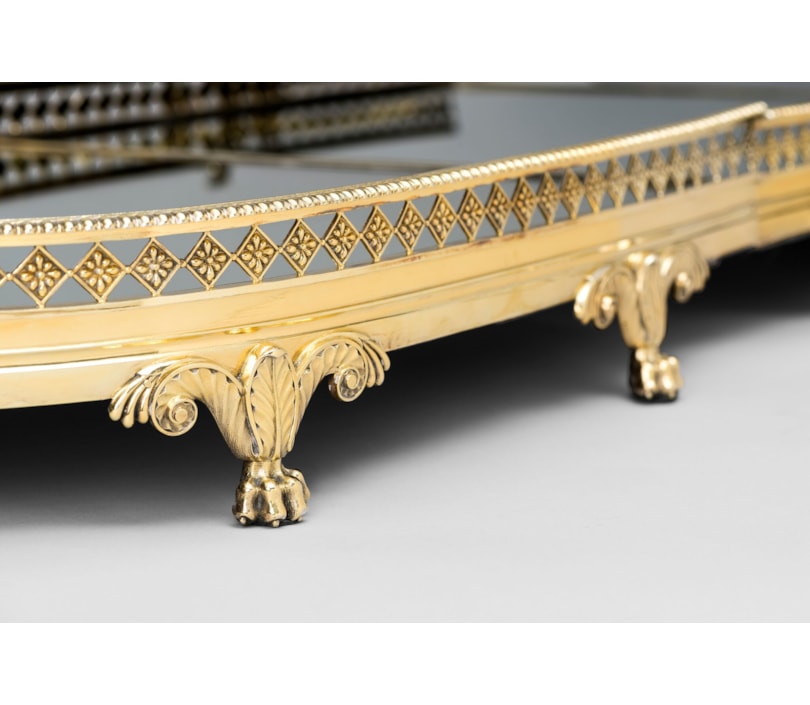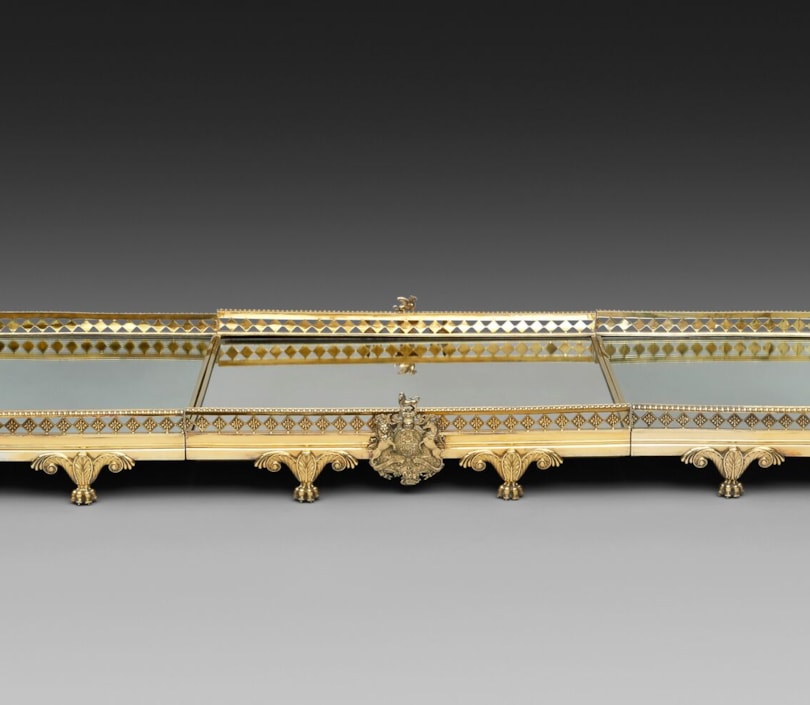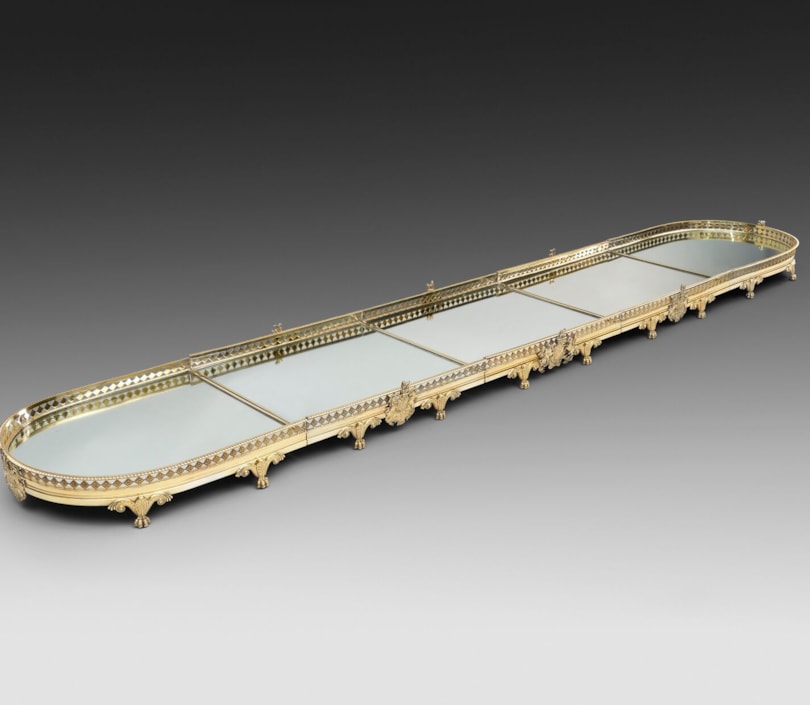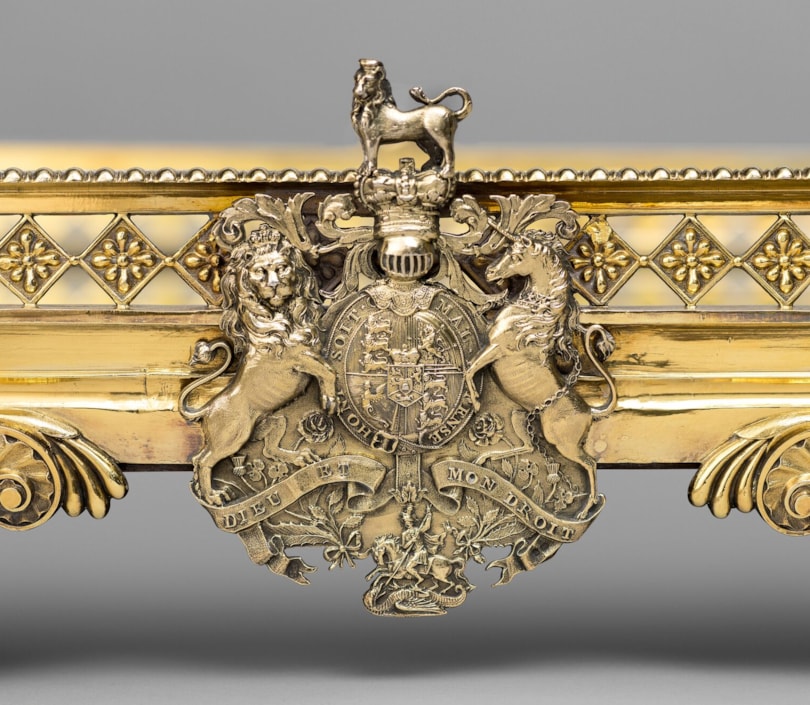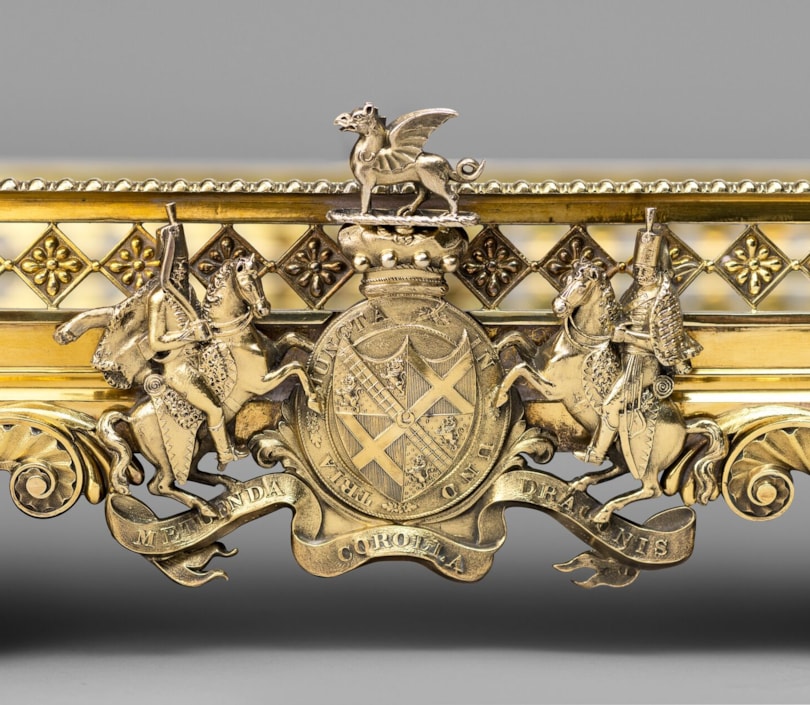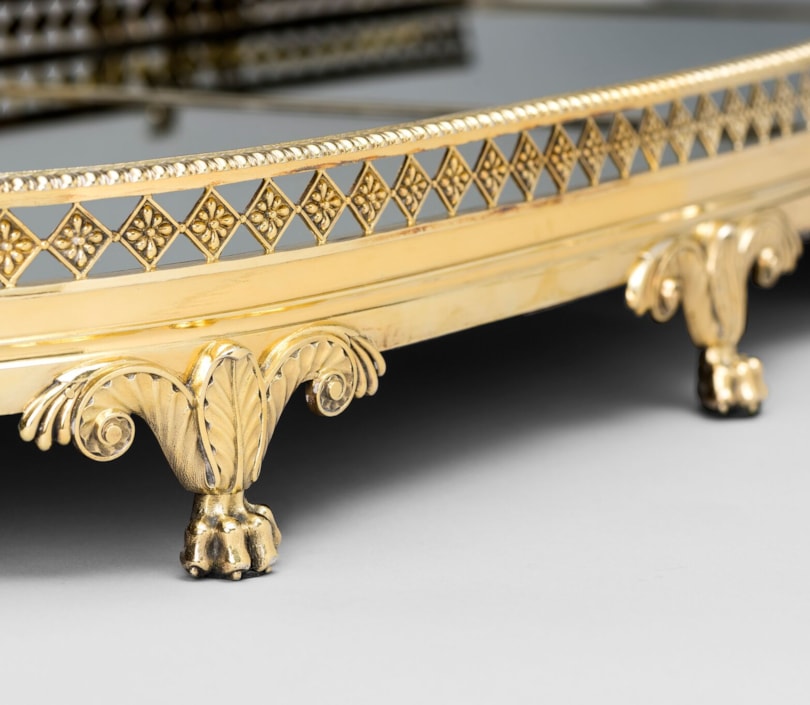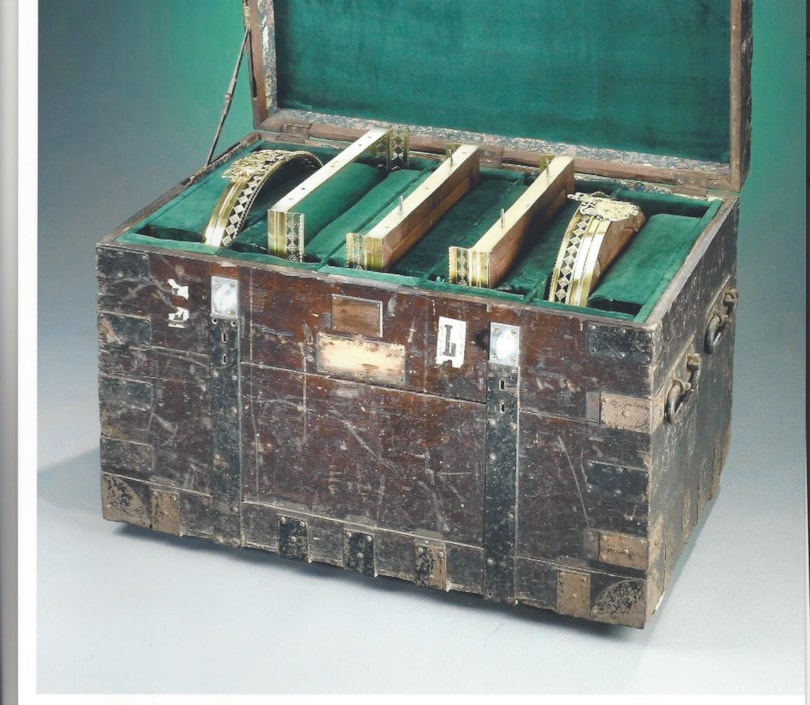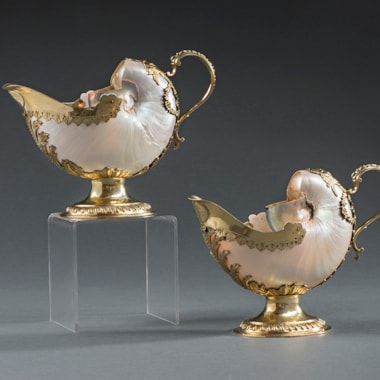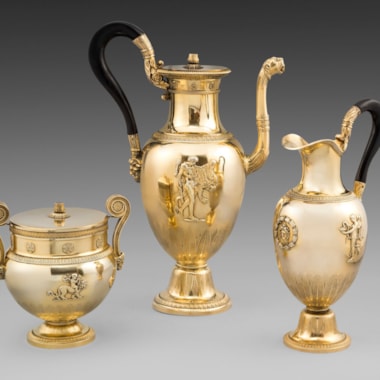The oblong plateau with curved ends and in five sections. Each inset with a mirror and on four lion's paw feet with palmette, scroll and anthemion decoration. The sections decorated with cast and pierced lozenge and rosette sides and with gadrooned rim, the sides alternately applied with the Royal arms and a coat-of-arms with Baron's coronet above.
Baron Stewart, later 3rd Marquess of Londonderry (1778-1854), fought with Wellington in many of his campaigns and was a politician and diplomat of note. He started his army career in 1794, having been educated at Eton College where he was remembered for his bravery in his attempt to save his school fellow, George, 5th Earl Waldegrave (1784-1794), from drowning. Whilst in the Regiment of Foot, he fought in campaigns in the Netherlands and the Rhine. He served as Aide-de-camp to his uncle Charles, 2nd Earl Camden (1759-1840) from 1795 to 1798. In 1803 he was made Aide-de-camp to the King, and having been elected to the Irish seat of Thomastown in 1798, he was made Under-Secretary in Ireland. His half-brother, then Lord Castlereagh, later 2nd Marquess of Londonderry (1769-1822), was Secretary of State for War. Stewart became Under-Secretary of State for War in 1807, a post he left to command the Hussar Brigade in Sir John Moore's Portuguese Campaign of 1808. He returned to the Iberian peninsula on a number of occasions, under Moore and the Duke of Wellington. Wellington always remained on good terms with Stewart, however he felt he intrigued against him and undermined the support for his Spanish campaigns. Although he prevented Stewart from returning to the peninsula in 1812, after he had recovered from a fever, they remained friends until Wellington's death in 1852, when Stewart was one of the pall bearers. Stewart was made a Knight of the Bath in 1813 and also received the Portuguese order of the Tower and Sword. In 1813 he was sent as British minister in the court of Berlin. He was present at the signing of the Dresden Treaty, which formed an alliance between Britain, Russia and Prussia. He fought in a number of battles and was severely wounded at Kulm. His actions were acknowledged by the many foreign decorations he received, including the Russian Order of St. George. This was accompanied by a letter from Emperor Alexander I of Russia (1801-1825) which noted the 'zeal, coolness and bravery' displayed by Stewart on the battlefield.
In July 1814 he was created Baron Stewart of Stewart's Court and Ballylawn, co. Donegall. In August of the same year he was sent to Vienna as Ambassador, and it is probable this plateau was part of the ambassadorial plate as his applied arms are encircled by the motto of the Order of the Bath and surmounted by a Baron's coronet. On his brother's death in 1822, he became 3rd Marquess of Londonderry. He returned to England in the same year and developed his estates, including the Seaham estate, which he had bought recently. He built a magnificent house, Wynyard Park, and created railways, a harbour and docks, bringing employment and wealth to the area. He was made an ambassador again in 1835 when he went to St. Petersburg. Grenville commented that, although he was not particularly partial to the man, he 'was very fit for the post, was an excellent Ambassador, procured more information and obtained more insight into the affairs of a foreign court than anybody'. In 1837 he became a General, and was appointed Lord-Lieutenant of Durham in 1842. He was made a Knight of the Garter after the death of Wellington in 1852, although he survived only two more years, dying at Holderness House on 6 March 1854. He was succeeded by Frederick, 4th Marquess of Londonderry (1805-1872), his only son by his first wife, Catherine, daughter of John, 3rd Earl of Darnley (1719-1791). She had died in 1812 and Stewart had later married Frances Anne (d.1865), daughter and heir of Sir Harry Vane-Tempest 2nd Bt. (d.1813), in 1812. On his marriage, Stewart took name Vane and was created Earl Vane in 1823. The Earldom passed to the eldest son of his second marriage, who also became 5th Marquess of Londonderry on the death of his half-brother, the 4th Marquess, in 1872.
The second coat-of-arms is that of Stewart with a crescent for difference, for Charles William, 1st Baron Stewart G.C.B., later 3rd Marquess of Londonderry K.G. (1778-1854).
You May Also Like



































































